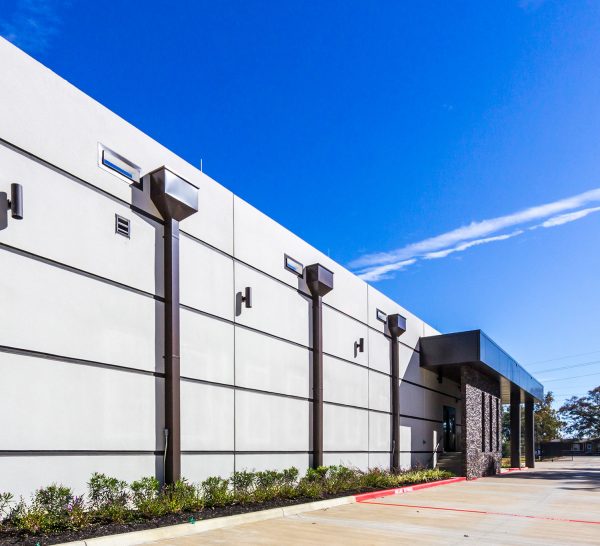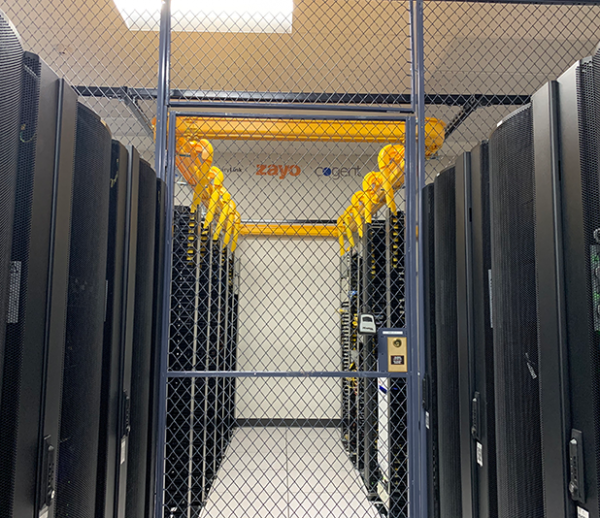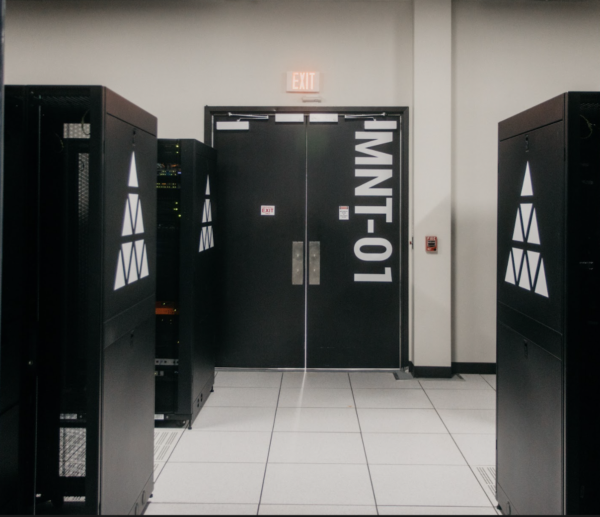In the age of digital acceleration and on-demand applications, organizations are looking for ways to simplify their IT infrastructure, reduce costs and scale globally.
Networking, which was once seen as a complex and costly part of the equation, has evolved with the rise of Network as a Service (NaaS).
In this article, we’ll define Network as a Service (Naas) and explain how It differs from other “as a Service” cloud services like SaaS. We’ll also examine how it works and its advantages and disadvantages.
We’ll also explore the impact of NaaS in cloud computing and discuss related technologies like SASE, SD-WAN, and NFV.
What is Network as a Service?
What is NaaS? Network as a Service (NaaS) is a cloud-based model that allows organizations to lease networking services from a provider rather than build and maintain their own. Seems straightforward enough, right?
With NaaS, organizations and IT departments can offload time-consuming tasks like managing routers, switches, firewalls, and other network infrastructure. How? It’s done through a user-friendly interface or application programming interface (API), giving organizations more flexibility without the hassle of managing the physical hardware.
How Does NaaS Work?
How does it work exactly? NaaS works by virtualizing network services and delivering them over the internet. Network providers manage the entire network infrastructure, including hardware, software, and security.
Organizations can select services such as virtual routers, firewalls, and multi-cloud connectivity based on their needs, and only pay for what they use. This pay-as-you-go model eliminates the need for upfront capital investment.
Here’s how it typically works:
- Choose a Provider: The organization selects a NaaS provider based on their specific needs. NaaS providers offer services like virtual networking, Software Defined Networks (SDN), private cloud connectivity, and more. MegaPort, Aryaka and Cloudflare specialize in NaaS solutions.
- Select Services: Organizations pick the networking services they need, such as routing, firewalling, or cloud connections. They can adjust the scale and features based on their requirements.
- Connect Globally: NaaS providers offer global connectivity, allowing organizations to connect to their offices, data centers, and cloud providers regardless of geography.
With NaaS, organizations don’t need to worry about configuring hardware or maintaining network devices. The provider handles everything, including network virtualization, ensuring seamless, on-demand network services.
What is the Difference Between NaaS and SaaS?
A common question is, what is the difference between NaaS and SaaS? Both NaaS (Network as a Service) and SaaS (Software as a Service) are cloud-based models, but they serve different functions. SaaS delivers software applications over the cloud—think of tools like Slack, Gmail, or Office 365. Users don’t manage the underlying infrastructure; they just use the software.
NaaS, on the other hand, focuses specifically on providing network services via the cloud. It handles the network infrastructure, allowing organizations to run their operations without having to invest in physical networking hardware.
While SaaS is software-focused, NaaS is infrastructure-focused, enabling network connectivity and management in cloud environments.
Benefits of Network as a Service
The growing adoption of NaaS is driven by several factors, including increased cost savings, scalability, simplified management, and global connectivity. Here’s a look at key benefits of NaaS in more detail:
- Cost Savings: Traditional networks require significant upfront investment in hardware. NaaS offers a more cost-efficient alternative with subscription pricing, letting organizations pay only for what they use.
- Scalability: NaaS allows enterprises to scale their network resources on demand. Need more bandwidth? You can easily upgrade. This flexibility is especially useful in industries where network demands fluctuate frequently.
- Simplified Management: By outsourcing network management to a provider, organizations can focus on their core operations without worrying about maintaining routers, switches, or firewalls.
- Global Connectivity: NaaS providers offer global services, enabling organizations to connect offices, cloud environments, and data centers worldwide.
Why Organizations Are Moving to NaaS Now
The business case for NaaS has rapidly matured over the last two years, driven by a mix of technological, economic and regulatory forces, all of which make the status quo unsustainable.
Modern Work is Borderless
Hybrid and remote teams can’t rely on hub-and-spoke VPNs alone. Local points of presence (PoPs) in a NaaS fabric shorten the distance between users and SaaS, delivering sub-50 ms round-trip times for collaboration apps like Teams and Zoom.
Edge, IoT & 5G Proliferation
Smart factories, connected retail shelves and tele-health devices create thousands of new endpoints. NaaS’s programmable bandwidth lets operations teams light up edge links in minutes instead of waiting weeks for telco circuits.
Cloud-Native and Micro-Services Boom
Containerized micro-services generate chatty east-west traffic. Routing that traffic over a private, congestion-free backbone avoids noisy-neighbor issues on the public internet and keeps latency predictable.
Macroeconomic Pressure
CFOs prefer OpEx over CapEx refresh cycles. Rather than buying new chassis every five years, a subscription model flexes spending with business demand.
Regulatory & ESG Drivers
Data-residency controls require pinning workloads inside specific regions. Granular PoP selection meets GDPR while right-sizing bandwidth cuts idle-gear emissions, contributing to lower Scope 2 carbon figures.
Key Features of Modern NaaS Platforms
Self-Service Portal & API-First Design
Spin up circuits or tear them down in minutes via a portal that feels like a cloud console or call a fully documented REST/GraphQL API from Terraform or Ansible.
Integrated Security Stack
Next-gen firewall, secure web gateway and DDoS protection ride the same backbone, enforcing zero-trust policies without extra hardware.
Granular Analytics & Observability
Flow logs, synthetic probes and ML-driven anomaly detection surface jitter heatmaps and MOS scores so you can troubleshoot before tickets flood in.
Automated SLAs & Dynamic Path Selection
Machine-learning algorithms continuously probe path health, rerouting traffic or bursting bandwidth to maintain latency and packet-loss commitments, no 3 a.m. CLI sessions required.
Network as a Service in Cloud Computing
Cloud computing fundamentally changed the way organizations operate, and NaaS plays a critical role in cloud deployments. With NaaS in cloud computing, organizations can seamlessly connect to public and private clouds, creating hybrid or multi-cloud environments.
NaaS ensures that organizations have the right-sized connectivity for their cloud infrastructure, optimizing performance and reducing complexity.
For example, organizations using multi-cloud environments—where they operate in multiple public clouds, like AWS and Azure—often face challenges in managing different network architectures. NaaS simplifies this by providing unified, secure connectivity, ensuring that network performance is optimized regardless of the cloud provider.
In addition to hybrid and multi-cloud environments, there are hybrid IT strategies where organization connect on-premise systems, cloud, and offsite data centers to create flexibility and scalability while optimizing for cost savings. A hybrid IT approach allows organizations to keep sensitive data in-house while leveraging the scalability of the cloud and the reliability of colocation facilities.
Network as a Service (NaaS) plays a pivotal role by providing on-demand connectivity that seamlessly links all components, ensuring efficient data flow and simplified network management across the hybrid setup.
What are the Disadvantages of NaaS?
While NaaS has many advantages, it’s important to be aware of some potential disadvantages of NaaS, including dependence on the provider, security or compliance concerns, limitations on customization, and potential network performance issues:
- Dependence on Provider: By outsourcing your network, you’re relying heavily on the NaaS provider’s underlying infrastructure and management. If the provider experiences downtime, it can directly affect your organization’s operations.
- Security Concerns: While NaaS providers often offer robust security measures, some organizations may be hesitant to entrust their network security to a third-party provider.
- Customization Limitations: Depending on the provider, customization options may be limited. Organizations with highly specific networking needs might find that a one-size-fits-all solution doesn’t meet all their requirements.
- Network Performance Issues: In rare cases, organizations might experience performance bottlenecks, particularly if the provider’s infrastructure isn’t optimized for high-demand situations.
NaaS Use Cases
NaaS can be used in a variety of ways, depending on the organization’s requirements. Common use cases for the NaaS include:
- Connecting to Multi-Cloud Providers: NaaS simplifies private connections to multiple cloud providers, allowing organizations to create hybrid or multi-cloud environments.
- Virtual Routing: Instead of purchasing and managing physical routers, organizations can deploy virtual routers through their NaaS provider, reducing complexity and hardware costs.
- Disaster Recovery: NaaS can be used to establish backup networks for disaster recovery, ensuring continuous network connectivity in case of an outage.
Steps to Successfully Adopt NaaS
1. Baseline Your Current State
Inventory every circuit, appliance and monthly invoice. Capture latency, jitter and utilization for at least 30 days to establish a solid performance baseline.
2. Identify Quick-Win Workloads
Start with low-risk environments—non-production VPCs, a regional office or SaaS egress, to prove value without jeopardizing critical services.
3. Pilot & Measure
Run the NaaS link in parallel with legacy MPLS, comparing latency, packet loss and deployment speed side by side.
4. Gradual Migration
Move sites or applications in phases, using policy-based routing to fall back if needed. Executives sleep better with a rollback plan.
5. Optimize and Automate
Tune QoS, decommission idle circuits and fold the NaaS API into CI/CD so network changes ship with application releases.
Security and Compliance Best Practices for NaaS
From encryption hygiene to zero-trust segmentation, the checklist below offers the must-do controls that keep attackers out and auditors satisfied as you transition to a cloud-delivered network.
Embrace Zero-Trust
Authenticate every user and device, verify posture, and enforce least-privilege segmentation.
Encrypt Everywhere
Use IPSec, WireGuard or TLS, even across private backbones, to ensure defense-in-depth.
Continuous Monitoring
Ingest flow logs into your SIEM; ML-based detectors should auto-quarantine suspicious traffic.
Auditable Change Management
Require immutable logs for every API call and export them to your own bucket for independent retention.
Quarterly Compliance Reviews
Meet with your provider each quarter to confirm certifications remain current and that evolving regulations, like the EU’s NIS2, are addressed.
Related Technologies: SASE, SD-WAN and NFV
The future of NaaS is closely tied to networking technologies like SASE, SD-WAN, and NFV. Here is a brief description of each of these technologies.
- SASE (Secure Access Service Edge): SASE combines network security and wide area networking (WAN) into a unified, cloud-delivered service. By integrating SD-WAN with security services like firewall, secure web gateways, and zero-trust access, SASE delivers secure and efficient access to applications regardless of location. This model is gaining popularity as it allows organizations to manage both security and network performance through a single platform, making it a perfect complement to NaaS for secure, cloud-based networking.
- SD-WAN (Software-Defined Wide Area Network): SD-WAN is a more established technology than NaaS. It provides organizations with a way to manage and optimize wide area networks using software. It offers a more flexible and cost-effective solution for connecting remote offices, cloud environments, and data centers. By integrating SD-WAN with NaaS, organizations can gain even greater control over their network performance and security.
- Network Function Virtualization (NFV): With NFV, organizations can virtualize key network functions like firewalls and load balancers. Instead of relying on physical devices, they can run these functions on virtual machines or containers. NFV is a natural extension of NaaS, allowing for even greater flexibility and scalability.
The Future of Network as a Service (NaaS)
Looking ahead, there’s no doubt that NaaS is poised for growth. New innovations like machine learning and AI are being used to automate network operations, optimize performance, and manage costs in real-time.
Another key trend to watch is the rise of SASE (Secure Access Service Edge), which integrates networking and security.
In the future, we can expect NaaS providers to offer more robust services, with the integration of technologies like SD-WAN and AI-driven network management.
The flexibility, scalability, and cost-efficiency of NaaS make it a compelling solution for organizations looking to modernize their IT infrastructure.
Simplifying Operations and Scaling for Tomorrow
Network as a Service (NaaS) is a game changer for enterprises seeking to simplify their network operations while maintaining flexibility and scalability.
Whether you’re looking to connect multiple cloud environments, set up virtual routers, or optimize your global connectivity, NaaS offers a cost-effective and streamlined solution.
Explore More About NaaS
At TRG Datacenters, we believe adaptive networking should be a given. Backed by our carrier-rich Houston facility, our Network as a Service platform lets you spin up secure, low-latency links on demand, so your users never feel the impact of outages or capacity spikes.
We’re always ready to explain how on-demand networking works in practice and why it matters to your bottom line. Contact us today!
Looking for colocation?
For an unparalleled colocation experience, trust our expert team with three generations of experience







